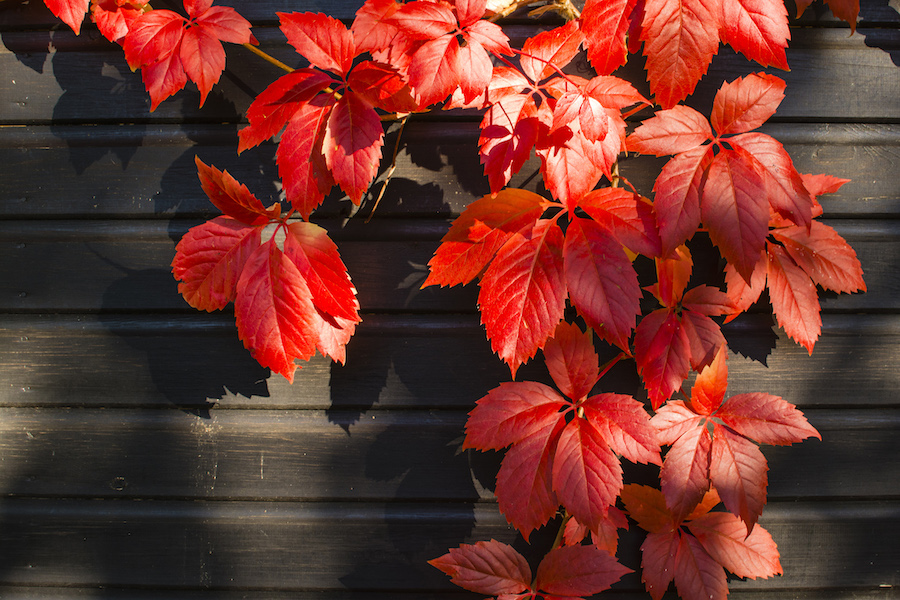7 design hacks to enhance your garden as the nights draw in
As the days become shorter and the autumn light dims, gardens can start to look a little lacklustre and unloved.
But with the right use of plants, landscaping and making the most of any available light, a well-designed autumn garden can blow the blues away and look spectacular.
Here, some of the UK’s leading experts from the Society of Garden Designers (sgd.org.uk), offer their advice on how to create a beautiful autumn garden…
1. Consider grasses and plants without blooms

Grasses can look striking
Non-flowering plants really come into their own later in the year. Grasses are an excellent example, says designer Manoj Malde, providing texture, silhouette and movement that can look stunning in the low light levels.
Miscanthus, calamagrostis and pennisetum are all good examples, while Stipa lessigiana, a shorter grass, will add a soft, airy quality to a border and act as a good foil for autumn plants. Molinia caerulea ‘Heidebraut’ (moor grass), a favourite with designer Gavin McWilliam, can also be used to great effect, creating a blaze of colour in an otherwise muted autumn garden.
2. Take advantage of low autumn sun

Seed heads add interest to borders too
Light is important in the garden at all times of year – but as it gets lower during the cooler months, it becomes key to designing a garden, notes designer and landscape architect Marian Boswall.
Plants that give a vibrant autumn display tend to colour up best in the sun, with trees and shrubs such as Cotinus ‘Grace’, Rhus typhina, Cercis canadensis ‘Forest Pansy’ and maples leading the way.
3. Position plants carefully

Peeling bark makes an effective touch
If you can position the plant so that the low autumn sun shines through the leaves, then you are in for a spectacular treat, says garden designer Jilayne Rickards.
Grasses, seed heads and trees with peeling bark, such as Betula nigra or Prunus serrula, can also look wonderful backlit the by autumn sun, adds McWilliam. Try to spend time getting to know when and where the light falls, so that you can plant accordingly.

Use acers to add colour
For those whose garden is in the shade, Rickards recommends Japanese maples such as Acer palmatum ‘Sango Kaku’ or ‘Osakazuki’, underplanted with an ornamental grass like Haconechloa macra ‘Aureola’, to create a spectacular display that will light up the space and help lift the darkness of autumn.
4. Highlight late-flowering showstoppers
Look for unusual varieties such as Camellia sasanqua ‘Early Pearly’, which produces large white flowers from early November, advises designer Maitanne Hunt. Or try threading late-flowering varieties, such as Salvia microphylla, through flower beds to add extra colour when other plants are fading, suggests designer Rosemary Coldstream.

Dahlias will flower late in the season
The warm vibrant colours of dahlias, which flower well in to the autumn, are also wonderful mixed in with grasses, says Coldstream, while late-flowering perennials like anemone, asters and slowly-changing sedums will still be blooming late into the season, adds Rickards.
5. Celebrate the season with berries

Pyracantha berries brighten the scene
Bare branches can make a garden look untidy, so fight back by planting shrubs and plants bursting with autumn berries to provide colour well into the winter. Rickards recommends Viburnum opulus and pyracantha, both great berry-bearing shrubs. According to Hunt, Pyracantha Saphyr Rouge produces rich red tones and lends itself superbly to topiary.
6. Use the kaleidoscope of autumn colour
Autumn can deliver breathtaking colour, says McWilliam, so take advantage of it. Trees such as acers, liquidambar, amelanchier and parrotia can be planted to deliver a tremendous display of rich orange and red foliage as we head towards winter, while late-flowering perennials, such as the bold yellow rudbeckia, can add wonderful contrast to more sombre autumn planting.

Verbena bonariensis
Verbena bonariensis is another wonderful plant to prolong colour in the garden long into the autumn, says garden designer Ed Oddy.
Its light and open structure means it won’t dominate a planting scheme, but planting en masse will form a stunning haze of delicate lilac flowers. Planted against a dark evergreen hedge, such as Yew, will really make it pop, and the low autumn sun will create wonderful lengthening shadows on paving.
7. Turn the lights on

Introduce lighting to create shadows
A well designed garden will allow you to use the space as much as possible throughout the whole year, and as the nights close in, a thoughtfully designed lighting scheme can add real value to your garden by extending the season outside, says designer Tony Woods.
Try illuminating seating areas, pathways, drive ways and steps, and highlight key features such as trees and structural elements within the space. Clever lighting creates warmth, wonderful shadows, and highlights sculptural forms of specimen plants.
To find a designer to help you plan your perfect autumn garden, contact the Society of Garden Designers at sgd.org.uk.
The Press Association
Latest posts by The Press Association (see all)
- 5 new books to read this week - November 23, 2024
- 3 easy Mary Berry recipes to make this season - November 22, 2024
- In Pictures: Party stalwart kept New Labour in touch with traditional supporters - November 21, 2024
- 6 easy indoor exercises to try this winter – and why they are good for you - November 19, 2024
- Martin Clunes: I can’t afford to retire – I’ve got too many horses - November 19, 2024





















